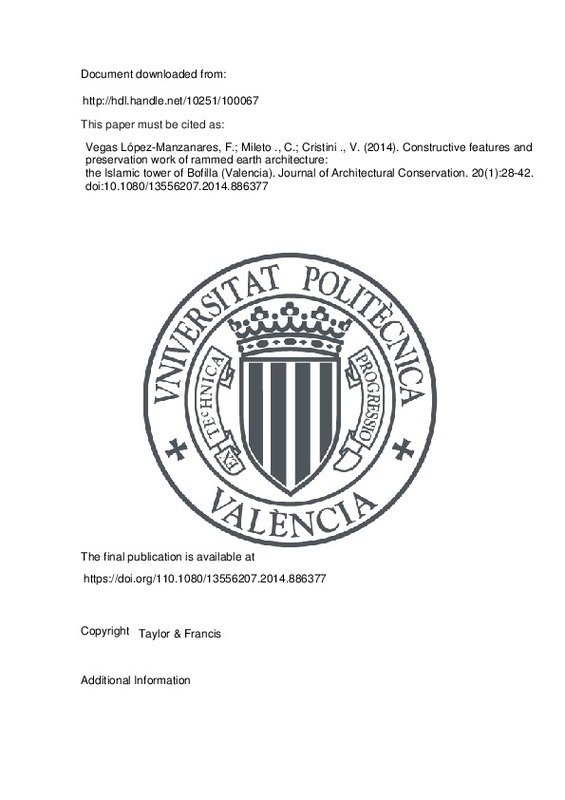JavaScript is disabled for your browser. Some features of this site may not work without it.
Buscar en RiuNet
Listar
Mi cuenta
Estadísticas
Ayuda RiuNet
Admin. UPV
Constructive features and preservation work of rammed earth architecture: the Islamic tower of Bofilla (Valencia)
Mostrar el registro completo del ítem
Vegas López-Manzanares, F.; Mileto ., C.; Cristini ., V. (2014). Constructive features and preservation work of rammed earth architecture: the Islamic tower of Bofilla (Valencia). Journal of Architectural Conservation. 20(1):28-42. doi:10.1080/13556207.2014.886377
Por favor, use este identificador para citar o enlazar este ítem: http://hdl.handle.net/10251/100067
Ficheros en el ítem
Metadatos del ítem
| Título: | Constructive features and preservation work of rammed earth architecture: the Islamic tower of Bofilla (Valencia) | |
| Autor: | ||
| Entidad UPV: |
|
|
| Fecha difusión: |
|
|
| Resumen: |
[EN] The Bofilla tower (Valencia, Spain), at 800 years old one of the oldest buildings still standing in the whole region, is a rubble-reinforced rammed earth construction almost 20 m high. Its precarious condition called ...[+]
|
|
| Palabras clave: |
|
|
| Derechos de uso: | Reserva de todos los derechos | |
| Fuente: |
|
|
| DOI: |
|
|
| Editorial: |
|
|
| Versión del editor: | https://doi.org/110.1080/13556207.2014.886377 | |
| Tipo: |
|







![[Cerrado]](/themes/UPV/images/candado.png)


